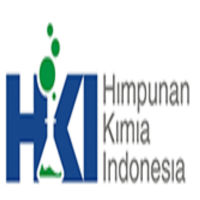FERMENTASI MOLASE DARI TETES TEBU SEBAGAI ALTERNATIF BAHAN BAKAR TERBARUKAN
Abstract
Molasses fermentation from molasses has been studied as an alternative to renewable energy. The goal of this research was to determine molasses fermentation as an alternative to renewable energy. The goal of this research was to monitor the alcohol concentration and pH levels during the fermentation process. This study employed a completely randomized design (CRD) method with two components. Factor A is the amount of time required for aeration. Molasses dilution is factor B. Factor A was tested across four different time periods: 24, 48, 72, and 96 hours. Factor B was tested using three different ratios: 1: 1.5, 1: 2, and 1: 2.5. The calculations of alcohol content FcalcP = 74.35> Ftable (11; 36; 0.05) = 2.07 and Ftable (11; 36; 0.01) = 2.79 revealed that components A and B had a significant impact on the final alcohol content. The BNJ 1% was calculated to be 0.63. This demonstrates that A4B3 is the most effective treatment. FcalcP = 2.85> Ftable (11; 36; 0.05) = 2.07 and Ftable (11; 36; 0.01) = 2.79, indicating that factors A and B have a highly substantial effect on acidity (pH). The BNJ 5% was obtained at a value of 0.61. This also demonstrates the optimal acidity conditions in A4B3 therapy. Based on these findings, it is clear that aeration for 96 hours and dilution with a 1: 2.5 ratio produce the greatest outcomes and the maximum alcohol content. At a pH of 4.45, the average bioethanol content is 6.31%.
Keywords
Full Text:
PDFReferences
Afrah, M. (2019). Strategi Pengembangkan Industri Hilir Pabrik Gula. Buletin Utama Teknik, 14(2), 136–139. https://ejournal.unesa.ac.id/index.php/avatara/article/view/48129/40181
Amin, M. C., Taufiq, A. J., dan Kurniawan, I. H. (2019). Pemanfaatan Ampas Tebu Sebagai Pembangkit Listrik Biomassa di PG. Sragi Pekalongan. Jurnal Riset Rekayasa Elektro, 1(1), 1–10. https://doi.org/10.30595/jrre.v1i1.4922
Anggraini, S. A., Yuniningsih, S., dan Sota, M. M. (2017). Pengaruh pH terhadap Kualitas Produk Etanol dari Molasses Melalui Proses Fermentasi. Reka Buana, 2(2), 99–105.
Arif, A. Bin, Diyono, W., Budiyanti, A., dan Richana, N. (2016). Analisis Rancangan Faktorial Tiga Faktor Untuk Optimalisasi Produksi Bioetanol Dari Molases Tebu. Informatika Pertanian, 25(1), 145. https://doi.org/10.21082/ip.v25n1.2016.p145-154
Arshad, M., Hussain, T., Iqbal, M., dan Abbas, M. (2017). Enhanced Ethanol Production at Commercial Scale from Molasses using High Gravity Technology by Mutant S. cerevisiae. Brazilian Journal of Microbiology, 48(3), 403–409. https://doi.org/10.1016/j.bjm.2017.02.003
Cao, G., Zhang, X., Gong, S., dan Zheng, F. (2008). Investigation on emission factors of particulate matter and gaseous pollutants from crop residue burning. Journal of Enviromental Science, 20, 50–55. https://doi.org/10.1016/S1001-0742(08)60007-8
Fifendy, M., Irdawati, dan Eldini. (2013). Pengaruh Pemanfaatan Molase terhadap Jumlah Mikroba dan Ketebal Nata pada teh Kombucha. Prosiding Semirata FMIPA Universitas Lampung, 67–72.
Friedlingstein, P., Andrew, R. M., Rogelj, J., Peters, G. P., Canadell, J. G., Knutti, R., Luderer, G., Raupach, M. R., Schaeffer, M., Vuuren, D. P. V., dan Quéré, C. L. (2014). Persistent growth of CO2 emissions and implications for reaching climate targets. Nature Geoscience, 7(10), 709–715. https://doi.org/10.1038/ngeo2248
Jayus, J., Noorvita, I. V., dan Nurhayati. (2016). Produksi Bioetanol Oleh Saccharomyces cerevisiae FNCC 3210 pada Media Molases dengan Kecepatan Agitasi dan Aerasi yang Berbeda. Jurnal Agroteknologi, 10(02), 184–192.
Juwita, R. (2012). Studi produksi alkohol dari tetes tebu (Saccharum officinarum L) selama Proses Fermentasi.
Kemal, M., Sayin, C., dan Canakci, M. (2014). The Effect of Different Alcohol Fuels on the Performance , Emission and Combustion Characteristics of A Gasoline Engine. Fuel, 115, 901–906. https://doi.org/10.1016/j.fuel.2012.09.020
Likhanov, V. A., dan Lopatin, O. P. (2020). Development of Environmentally Friendly Alcohol-Fuel Emulsions for Diesel Engines. Journal of Physics: Conference Series, 1515(4), 1–5. https://doi.org/10.1088/1742-6596/1515/4/042019
Manochio, C., Andrade, B. R., Rodriguez, R. P., dan Moraes, B. S. (2017). Ethanol Form Biomass: A Comparative Overview. Renewable and Sustainale Energy Reviews, 80(June), 743–755. https://doi.org/10.1016/j.rser.2017.05.063
Rossi, L. M., Gallo, J. M. R., Mattoso, L. H. C., Buckeridge, M. S., Licence, P., dan Allen, D. T. (2021). Ethanol from Sugarcane and the Brazilian Biomass-Based Energy and Chemicals Sector. ACS Sustainable Chemistry and Engineering, 9(12), 4293–4295. https://doi.org/10.1021/acssuschem eng.1c01678
Steel, R. G. D., & Torrie, J. H. (1992). Prinsip dan Prosedur Statistika. Gramedia.
Suprayogi, D., Asra, R., dan Mahdalia, R. (2022). Analisis Produk Eco Enzyme dari Kulit Buah Nanas (Ananas comosus L.) dan Jeruk Berastagi (Citrus X sinensis L.). Jurnal Redoks, 7(1), 20–21.
Tartakovsky, L., dan Sheintuch, M. (2018). Fuel Reforming in Internal Combustion Engines. Progress in Energy and Combustion Science, 67, 88–114. https://doi.org/10.1016/j.pecs.2018.02.003
Vučurović, V. M., dan Razmovski, R. N. (2012). Ethanol Fermentation of Molasses by Saccharomyces cerevisiae. Acta Periodica Technologica, 43, 325–333. https://doi.org/10.2298/APT1243325V
Zentou, H., Abidin, Z. Z., Zouanti, M., dan Greetham, D. (2017). Effect of Operating Conditions on Molasses Fermentation for Bioethanol Production. International Journal of Applied Engineering Research, 12(15), 5202–5506.
DOI: http://dx.doi.org/10.22373/lj.v11i1.15474
Refbacks
- There are currently no refbacks.
Copyright (c) 2023 Adean Mayasri

This work is licensed under a Creative Commons Attribution 4.0 International License.
INDEXED IN

